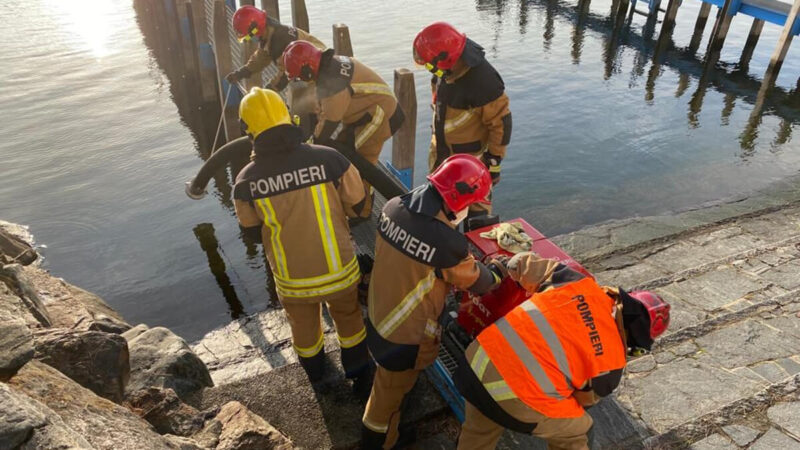‘We have a vast and often inaccessible territory, with lots of woodland, many hamlets and inhabited areas up to a thousand metres above sea level. In addition, we have to deal with a network of narrow streets that are difficult to access at certain times of the year. In short, for a municipality like Brissago, having a body of well-trained firefighters is an added value and an essential element of security for the entire population”. Words of Ottavio Palmieri, municipal head of the Security Dicastery.
Firefighters are often thought of mainly in relation to fires. But their tasks go far beyond the ‘fire police’.
“In the event of floods, landslides, falling trees or boulders, they are among the first to intervene – adds Palmieri –. That's why I always place a strong emphasis on their role in protecting the community. And as City Hall we are ready to support our firefighters by responding to their needs in terms of equipment and resources. Precisely because, I repeat, they are one of the pillars on which the organisation of public security is based”.
The commander, Loris Donetta, reiterates the concept of multifunctionality: “Most of our interventions – he says – are linked to flooding, chemical pollution, falling trees ... and, especially during the summer, we also deal with the disinfestation of wasp and hornet nests. In this case, we intervene on request at a fixed rate of CHF 150.”
Then, of course, there is the whole chapter of the fire: “Being a body of ‘urban firefighters’ – explains Donetta – we mainly intervene in the urban environment, but as Brissago has many woods, we are often first solicited even on that front, especially if the fire breaks out near houses or roads. Then we leave the field to helicopters and mountain firefighters, who are organised in a consortium that includes, in addition to Brissago, Ascona, Ronco and Losone”.
This multitask approach requires constant multi-pronged training. “For the part of education and picket – says the commander – we are financed by the municipality, while for interventions and refresher courses they are paid by the canton”.
Still on the fire front, Donetta explains that very often fires in homes start out of inattention or carelessness – such as the saucepan left on the lit stove, the ash of the fireplace with still the hot embers disposed of in the garden, the dirty chimneys.... Forest fires are caused by lightning or – here too – by human inattention.
And now for the data: Brissago firefighters counting today 25 men – likely to rise to 29 next year –. “It is no mystery that we are looking for new recruits, and in this sense we have participated in the cantonal recruitment campaign – says the commander –. Exceeding 30 men would be the top”.
They are all volunteers and receive remuneration only for hours of education, intervention and continuous training.
The training includes 10 body exercises per year, plus some others for those using breathing protection equipment and for drivers and drivers.
The minimum age to join the Corps is 18 years (apart from mini-firefighters starting from 9 years), the maximum age is 60 years.
The vehicles currently available are a tanker, a first responder vehicle, a van for transporting men, two for men and equipment and a command vehicle.
The area of intervention is generally limited to the territory of the municipality, but in the event of an emergency it extends to the whole of Locarno. And the number of interventions ranges from 30 to 40 per year. Finally, a few words on the degree of readiness: "We have to guarantee a first departure within a quarter of an hour," says Loris Donetta. That is why we have a 24-hour picket service made up of 5 men.’
